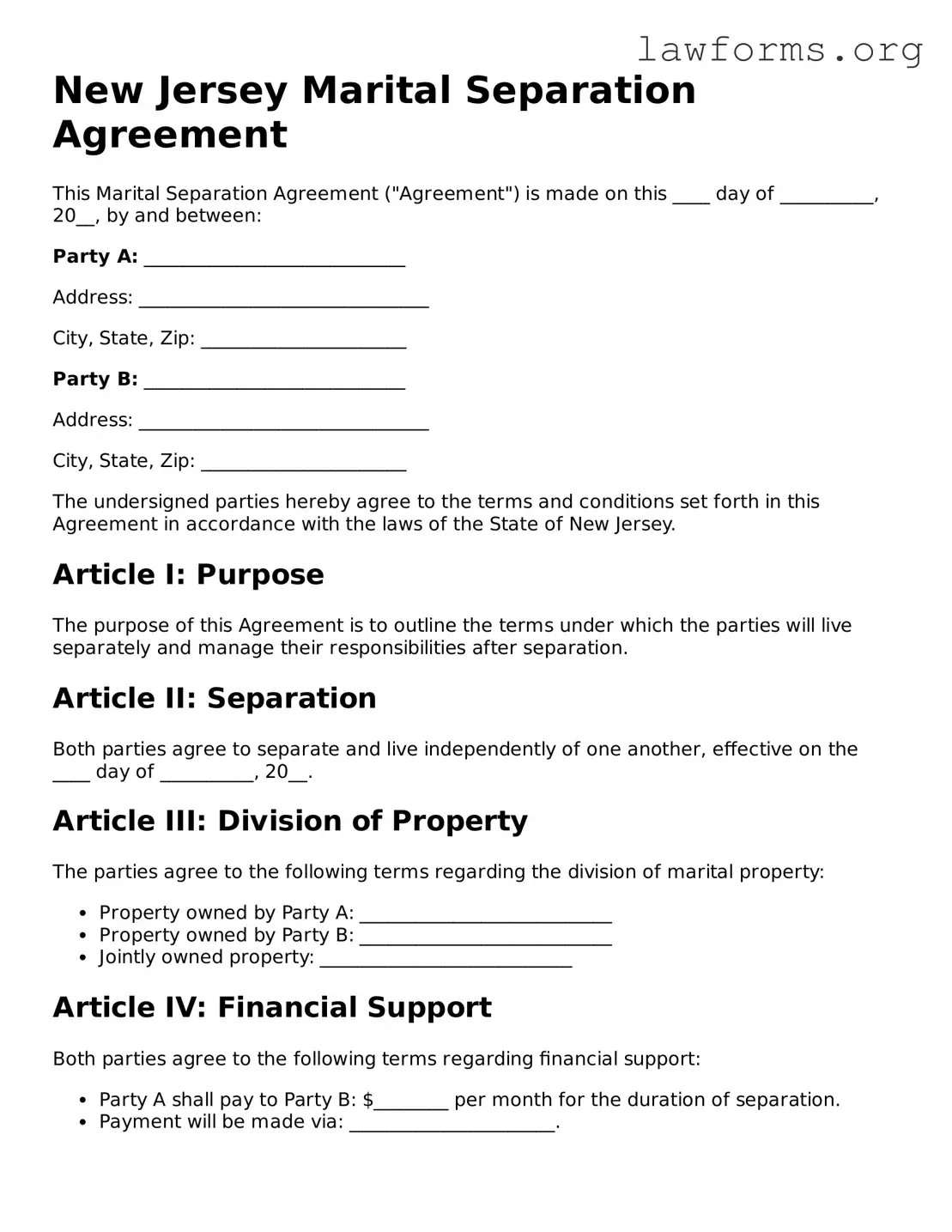New Jersey Marital Separation Agreement
This Marital Separation Agreement ("Agreement") is made on this ____ day of __________, 20__, by and between:
Party A: ____________________________
Address: _______________________________
City, State, Zip: ______________________
Party B: ____________________________
Address: _______________________________
City, State, Zip: ______________________
The undersigned parties hereby agree to the terms and conditions set forth in this Agreement in accordance with the laws of the State of New Jersey.
Article I: Purpose
The purpose of this Agreement is to outline the terms under which the parties will live separately and manage their responsibilities after separation.
Article II: Separation
Both parties agree to separate and live independently of one another, effective on the ____ day of __________, 20__.
Article III: Division of Property
The parties agree to the following terms regarding the division of marital property:
- Property owned by Party A: ___________________________
- Property owned by Party B: ___________________________
- Jointly owned property: ___________________________
Article IV: Financial Support
Both parties agree to the following terms regarding financial support:
- Party A shall pay to Party B: $________ per month for the duration of separation.
- Payment will be made via: ______________________.
Article V: Children
If applicable, the parties agree to the following terms regarding children:
- Children's names and birth dates: ______________________.
- Custody arrangements: ______________________.
- Child support payments: $________ per month.
Article VI: Miscellaneous
This Agreement constitutes the complete understanding between the parties. Any amendments or modifications shall be made in writing and signed by both parties.
Article VII: Governing Law
This Agreement shall be governed by and construed in accordance with the laws of the State of New Jersey.
IN WITNESS WHEREOF, the parties hereto have executed this Marital Separation Agreement on the day and year first above written.
Party A Signature: ____________________________
Date: ____________________________
Party B Signature: ____________________________
Date: ____________________________
